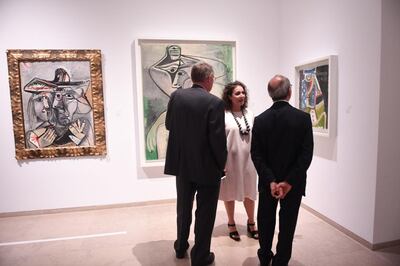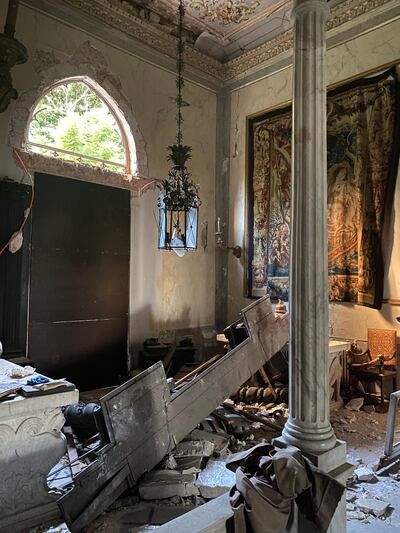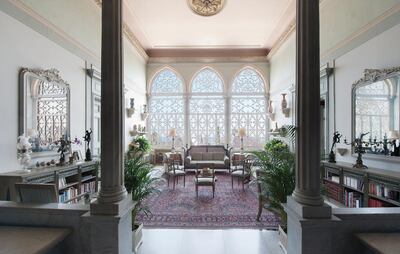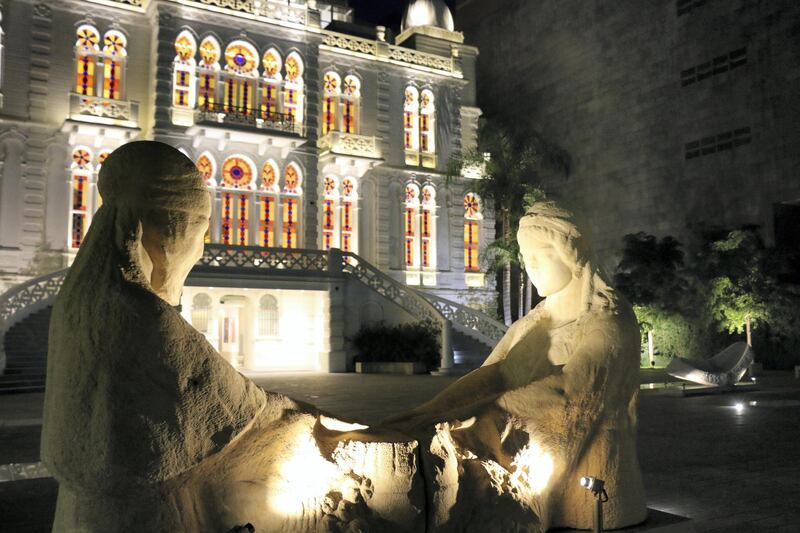Beirut’s largest and oldest independent cultural institution, the Sursock Museum, sustained enormous damage to its premises and collections during the blast. Entire parts of the 19th-century townhouse were reduced to rubble and 30 artworks that were on display at the time were damaged.
Today, as the museum begins to partially reopen, it faces questions about its role as a cultural institution in times of crisis. “We have an important role to play as a museum, and we have always tackled important topics. But the past two years have forced us to rethink our programme,” says director Zeina Arida, referring to the combined effects of Lebanon’s economic crisis, the pandemic and the port explosion.
Listen to the latest podcast on the Beirut blast here.
“We have to make sure our programme stays relevant to the current situation,” she says. “We don’t want to project the image that the art sector is in la-la land.”

Yet taking a new direction remains a sensitive issue. “There are so many things to take into consideration. First, the changes happening to our society in Lebanon, and then the global changes issued by the pandemic. Social divisions have increased in Lebanon and globally. And our financial possibilities as a museum have been reduced.”
Nevertheless the museum has made steady progress with its recovery. The first stage of reconstruction, paid for by the international heritage fund Aliph Foundation and the French Ministry of Culture, is nearing completion. Most of the damaged graphic works on paper have been restored, and the storage rooms have been cleared of dust deposits from the blast. “The dusting alone took three months,” Arida says.

She is preparing to send three damaged artworks to the Centre Pompidou in Paris for restoration. Among these is a portrait of the museum’s founder, Nicolas Sursock, by Dutch-French artist Kees van Dongen.
Activities have resumed on the esplanade. In May, the museum collaborated with performing arts festival Bipod to live-stream a series of acts, including Alexandre Paulikevitch and his A’alehom, an experimental dance focused on the current crisis. In July, Unesco’s three-day Terdad festival included several film screenings, workshops and performances at the museum.
Arida hopes Sursock can fully reopen next spring, and an exhibition in collaboration with the Dalloul Art Foundation is in the pipeline.

But simply reopening is not enough, she says. A change of direction is also incoming. “We need to include less visible communities and minorities – like refugees or migrant workers – in our programming, by working with a specific community or non-profit to design a programme and project.”
Another challenge will be growing the museum’s audience. “We always say that the museum is open to everyone, but of course not all of the Lebanese come,” she says. “Some people find it awkward to be in an art museum, and we need to adapt to them.”
While it tries to appeal to a wider audience, Sursock will continue to serve as a platform for Beirut’s artistic community to discuss the current crisis and possible steps forward. “The museum has always been a platform for collaborations with artists and the local community, but we need to do it even more than before."
The departure of the city’s typical museum-goer adds urgency to this task. “Our sector is a small representation of the country and its state. So many people have left, including intellectuals, artists, writers, collectors."
For Arida, maintaining a lively cultural sector is essential to Beirut’s identity. “It’s a cosmopolitan city where a lot of people from Europe and the Middle East come and meet. Artists and intellectuals from other Arab countries sought the freedom of expression that was available in Lebanon,” she says. “This mix of people, the artists, our history, created the energy that’s in the city.”
Its contemporary artistic identity, she says, flourished from an earlier crisis: the Lebanese Civil War. “The post-war period was so important for Beirut, artistically. There was a whole generation of artists and writers working on similar recent history. Lebanese artists became more visible in important museums around the world.”
But today, this climate of artistic exchange and openness is at stake. “It will depend on what happens politically – will we still be able to have freedom of expression? And it depends on the opportunities for artists in Lebanon.”






